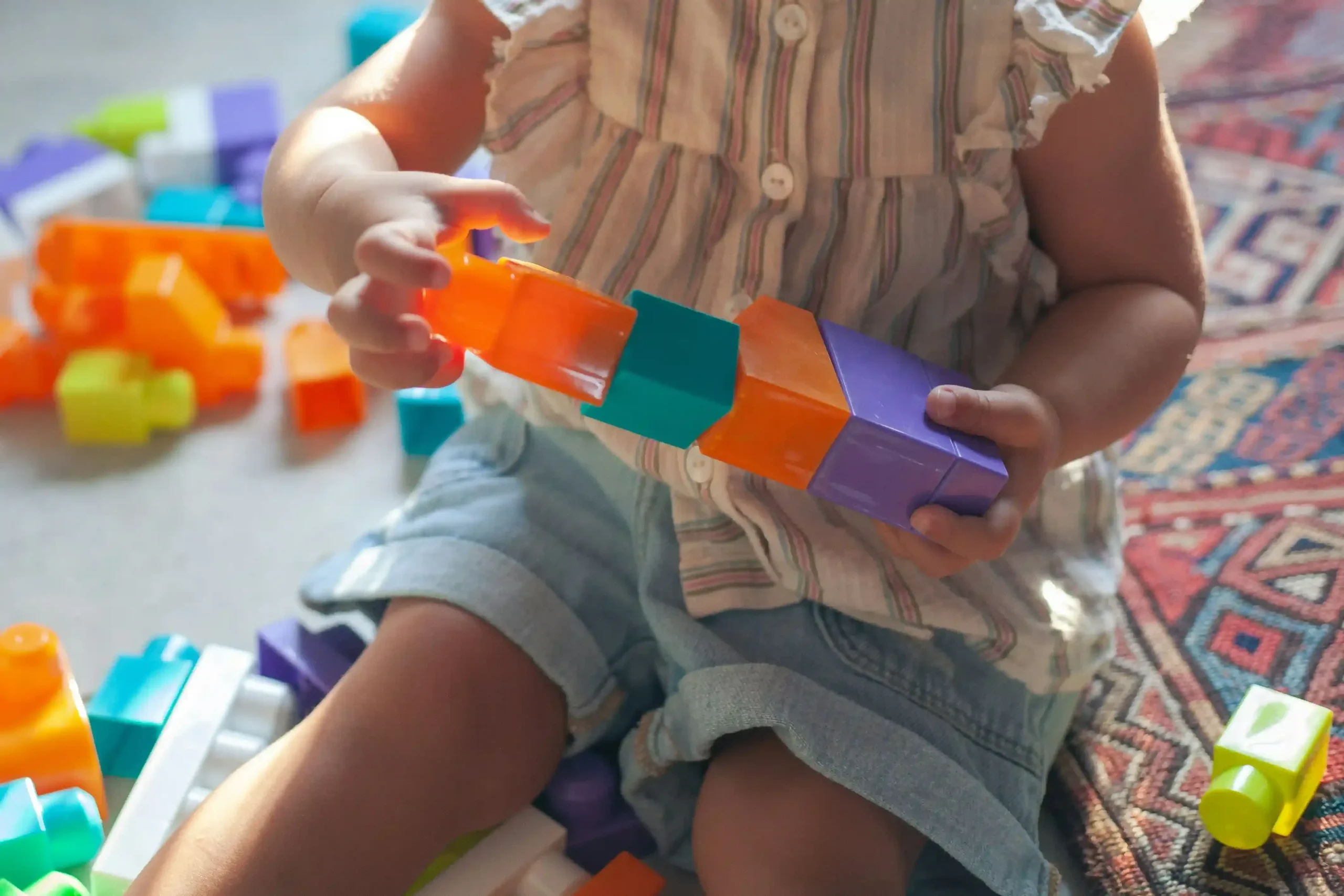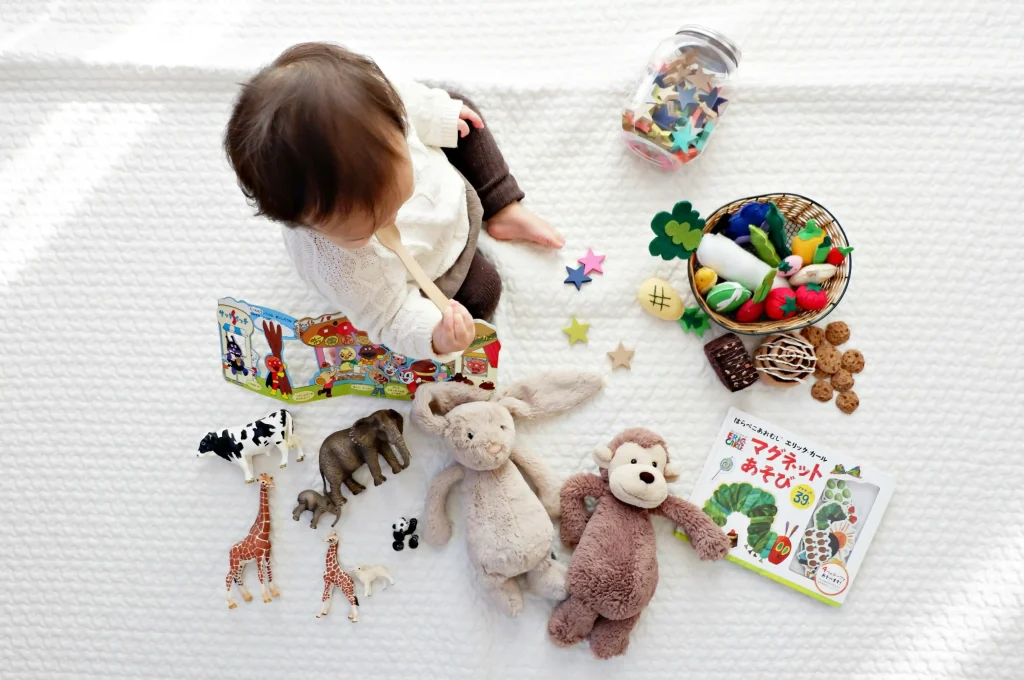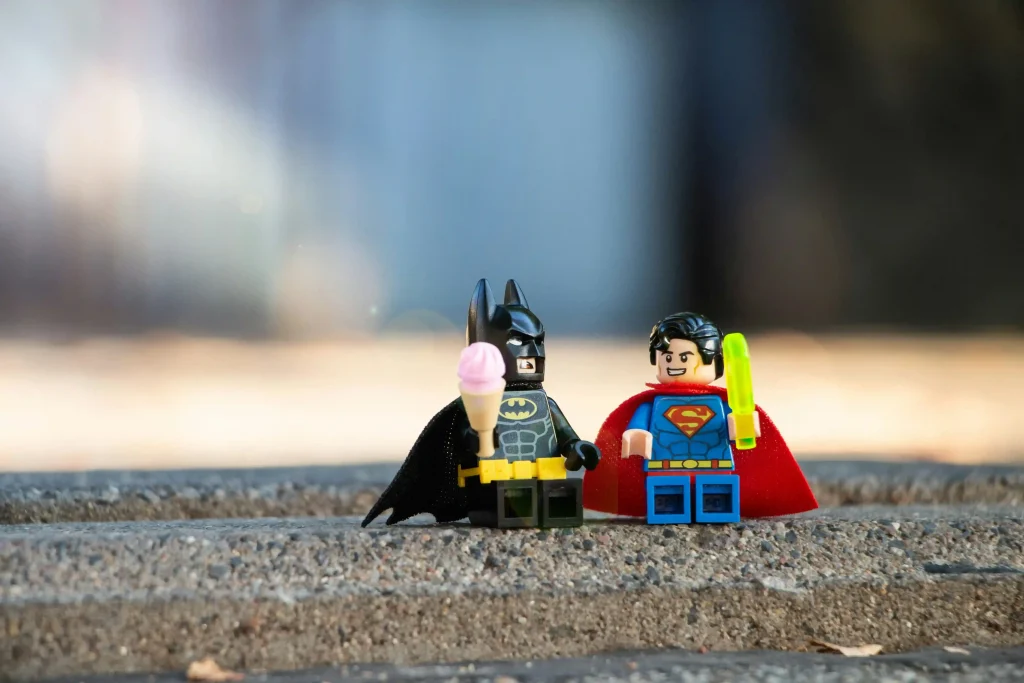Best infant development toys are the ones that truly adapt to a baby’s unique pace of growth. Over the years, I’ve learned that no two babies explore the world the same way—some respond to sound, others to texture or movement. That’s why I carefully observe each child before selecting infant development toys that meet their developmental stage and sensory preferences.
When I recommend the best infant development toys, I look for versatility, durability, and emotional engagement. A soft activity cube, for instance, can enhance tactile exploration, while a set of stacking rings improves hand-eye coordination and focus. I’ve also seen how mirror toys boost self-recognition and curiosity, essential milestones during the first year.
For parents, my advice is simple: don’t just buy what looks cute—choose best infant development toys that stimulate growth, spark joy, and encourage parent-infant interaction. At DeeCyDa, I curate and test these toys to ensure they combine fun with developmental science, so your baby can thrive with every touch, sound, and smile.
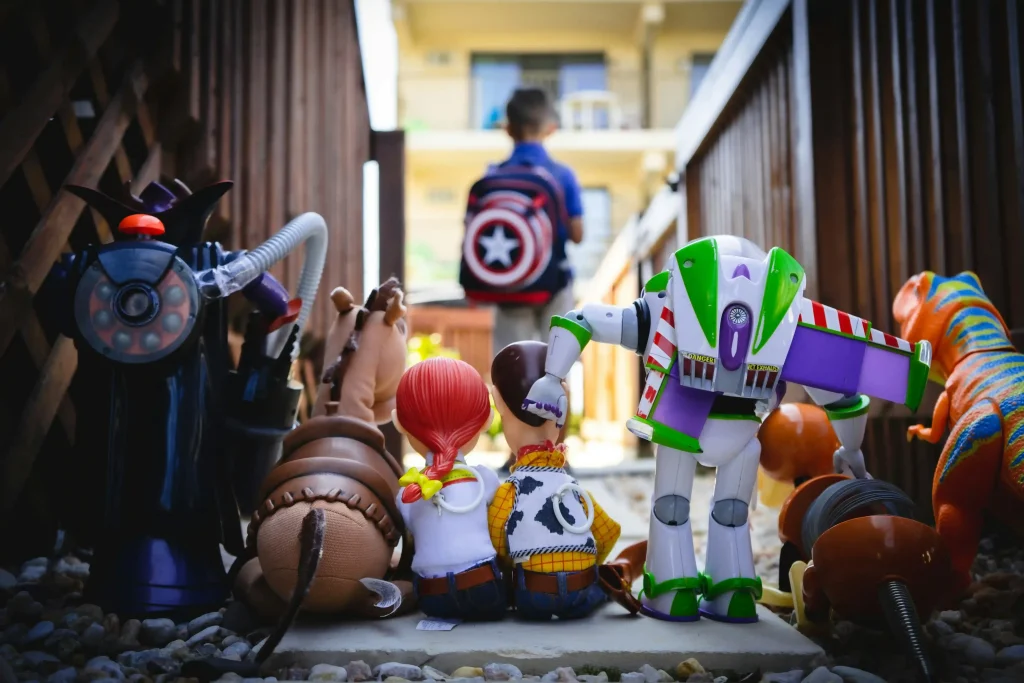
Contents
- 1 Why Infant Development Toys Matter So Much
- 2 Encouraging Parents to Play with Purpose
- 3 FAQ About Infant Development Toys
- 3.1 1. What are infant development toys? Infant development toys are specially designed play items that stimulate a baby’s sensory, motor, and cognitive skills during early growth.
- 3.2 2. Why are infant development toys important? They help babies explore textures, sounds, and movement, supporting brain development, coordination, and emotional bonding.
- 3.3 3. When should I start using infant development toys? You can introduce infant development toys from birth, starting with soft rattles or high-contrast visuals.
- 3.4 4. Are all infant development toys safe for newborns? Not all. Always choose infant development toys labeled as non-toxic, BPA-free, and appropriate for your baby’s age.
- 3.5 5. What are examples of good infant development toys? Rattles, teething rings, soft blocks, activity mats, and stacking cups are excellent infant development toys.
- 3.6 6. How many infant development toys does a baby need? A few high-quality infant development toys are better than too many. Rotate them to keep your baby curious and engaged.
- 3.7 7. Can infant development toys improve motor skills? Yes, best infant development toys that encourage grasping, reaching, and rolling help strengthen fine and gross motor coordination.
- 3.8 8. How do I clean infant development toys safely? Use warm water and mild soap for washable best infant development toys, and disinfect regularly to prevent germs.
- 3.9 9. Do infant development toys support emotional growth? Absolutely. best Infant development toys promote bonding, trust, and self-confidence through interactive play with caregivers.
- 3.10 10. Where can I find expert-approved infant development toys? At DeeCyDa, we recommend and use infant development toys that meet the highest standards of safety and learning quality.
- 3.11 My Final Thoughts as a Child Development Expert
Why Infant Development Toys Matter So Much
During the first year of life, a baby’s brain develops faster than at any other time. Every sound, color, and texture leaves an imprint. That’s why I always encourage parents to invest in best infant development toys that engage multiple senses. Toys that rattle, crinkle, roll, or light up spark both motor and cognitive growth.
When I introduce infant development toys in my classroom, I look for designs that help babies track movement with their eyes, grasp new shapes with their hands, and explore safe objects with their mouths. This combination of exploration and interaction builds the foundation for later problem-solving and language development.
How I Choose the Right Infant Development Toys
Over the years, I’ve tested hundreds of products, and my advice remains simple: always focus on sensory variety, safety, and developmental milestones. When I choose infant development toys, I start by considering three key factors:
- Age Appropriateness: A newborn benefits from high-contrast toys, while a 9-month-old may need stacking cups or activity cubes.
- Motor Skills: I choose infant development toys that challenge fine and gross motor coordination—soft blocks, rolling balls, and textured rings are ideal.
- Social Interaction: Toys that promote back-and-forth play strengthen the bond between caregiver and child.
The best infant development toys are not necessarily expensive; they are the ones that encourage babies to think, reach, and respond. I’ve seen a simple set of nesting cups become a child’s favorite tool for building confidence and coordination.
The Role of Safety and Design in Infant Development Toys
I often tell parents that infant development toys should be as safe as they are stimulating. I personally inspect each toy for choking hazards, toxic materials, and rough edges. At DeeCyDa, all our recommended infant development toys meet rigorous safety standards and are chosen to support sensory growth in a nurturing, secure environment.
The color palette, sound level, and tactile quality of a toy can either calm or overstimulate a baby. That’s why I prefer infant development toys that feature soft tones, gentle rattles, and natural materials. These details encourage focused play and emotional comfort.
Encouraging Parents to Play with Purpose
One of the most fulfilling moments of my work is showing parents how to engage with their infants using simple infant development toys. When a parent shakes a rattle and waits for eye contact, or rolls a soft ball back and forth, that interaction builds trust, rhythm, and communication.
I often demonstrate how a single toy can be used in multiple ways to promote learning. For example, a soft plush block can teach color recognition, counting, and texture exploration—all within a few minutes of play. Purposeful use of infant development toys transforms ordinary moments into learning experiences.
Expert Tips to Maximize the Benefits of Infant Development Toys
- Rotate toys every few days to keep curiosity alive.
- Let your baby lead the play—observe what fascinates them.
- Use infant development toys during routines like tummy time or diaper changes to make learning natural.
- Avoid overstimulation; two or three infant development toys at a time are enough.
- Celebrate milestones—when your baby reaches, claps, or stacks a block, they’re mastering key developmental skills.
The Psychological Impact of Infant Development Toys
From my professional experience, I’ve seen how infant development toys do far more than entertain—they play a vital role in shaping emotional and psychological growth. The first months of life are when a baby begins to build trust, curiosity, and self-awareness. When babies interact with best infant development toys, they start forming early cognitive patterns—understanding cause and effect, recognizing familiar shapes, and building confidence through small achievements.
Psychologically, these toys create a safe space for exploration and emotional regulation. A soft rattle, for instance, can calm anxiety through rhythmic sound, while a colorful mobile promotes visual focus and a sense of security. As an educator, I’ve noticed that consistent play with best infant development toys strengthens problem-solving skills and emotional resilience. Each playful discovery nurtures confidence, independence, and joy—cornerstones of healthy psychological development.
At DeeCyDa, I integrate carefully selected best infant development toys into daily activities to encourage balanced emotional expression, curiosity, and early social awareness. This approach helps every child grow not just intellectually, but also emotionally—feeling safe, seen, and supported from their very first stage of learning.
What Type of Toys Are Most Effective for Infants
From my years of experience in early childhood education, I’ve learned that the most effective infant development toys are those that nurture sensory exploration, emotional comfort, and motor coordination. Babies learn best through touch, sound, and movement, so I always recommend soft textured toys, rattles, and grasping rings that stimulate multiple senses. Activity gyms and play mats are wonderful Best infant development toys because they encourage tummy time, reaching, and visual tracking—all critical for brain and muscle growth.
I also find that mirror toys, musical mobiles, and stacking cups inspire curiosity and self-recognition, helping infants understand cause and effect. Simple, open-ended infant development toys—like soft blocks or teething toys—are especially valuable because they adapt as the baby grows. These toys don’t just entertain; they build confidence, independence, and early problem-solving skills.
At DeeCyDa, I carefully select infant development toys that blend fun with developmental science—encouraging every infant to grow emotionally, cognitively, and physically in a joyful, nurturing environment.
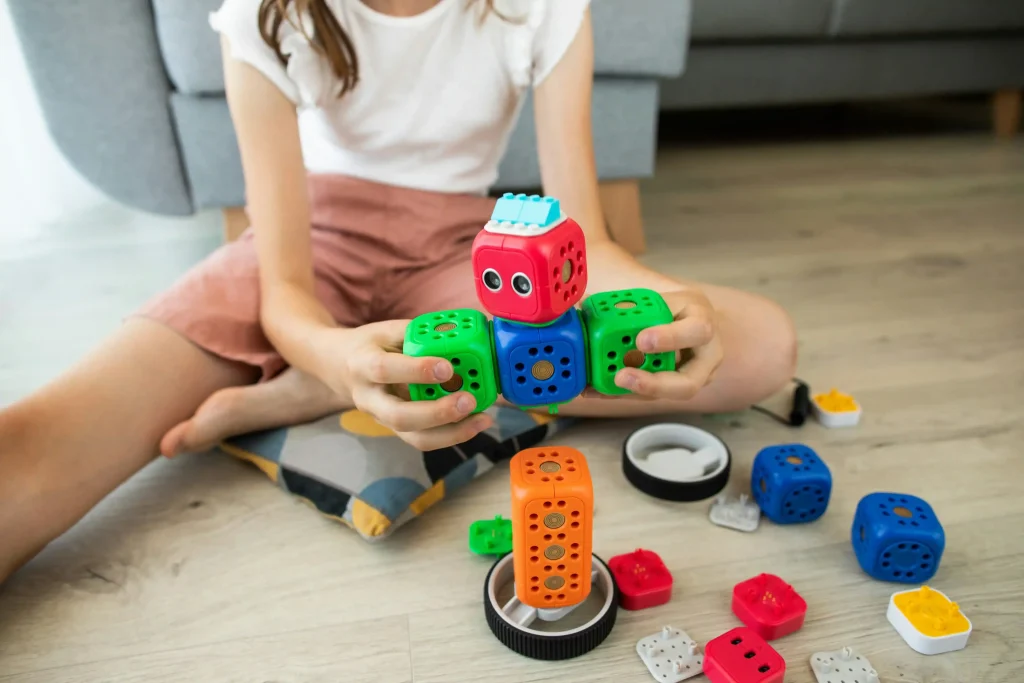
FAQ About Infant Development Toys
1. What are infant development toys?
Infant development toys are specially designed play items that stimulate a baby’s sensory, motor, and cognitive skills during early growth.
2. Why are infant development toys important?
They help babies explore textures, sounds, and movement, supporting brain development, coordination, and emotional bonding.
3. When should I start using infant development toys?
You can introduce infant development toys from birth, starting with soft rattles or high-contrast visuals.
4. Are all infant development toys safe for newborns?
Not all. Always choose infant development toys labeled as non-toxic, BPA-free, and appropriate for your baby’s age.
5. What are examples of good infant development toys?
Rattles, teething rings, soft blocks, activity mats, and stacking cups are excellent infant development toys.
6. How many infant development toys does a baby need?
A few high-quality infant development toys are better than too many. Rotate them to keep your baby curious and engaged.
7. Can infant development toys improve motor skills?
Yes, best infant development toys that encourage grasping, reaching, and rolling help strengthen fine and gross motor coordination.
8. How do I clean infant development toys safely?
Use warm water and mild soap for washable best infant development toys, and disinfect regularly to prevent germs.
9. Do infant development toys support emotional growth?
Absolutely. best Infant development toys promote bonding, trust, and self-confidence through interactive play with caregivers.
10. Where can I find expert-approved infant development toys?
At DeeCyDa, we recommend and use infant development toys that meet the highest standards of safety and learning quality.
My Final Thoughts as a Child Development Expert
Choosing the best infant development toys is not just about filling a nursery; it’s about shaping how a child experiences the world. Each color, texture, and sound becomes part of a baby’s story of growth. I’ve seen how thoughtful selection and interactive play inspire confidence, curiosity, and joy—qualities that define lifelong learners.
At DeeCyDa, we’re committed to helping families find the best infant development toys that nurture creativity and emotional co


